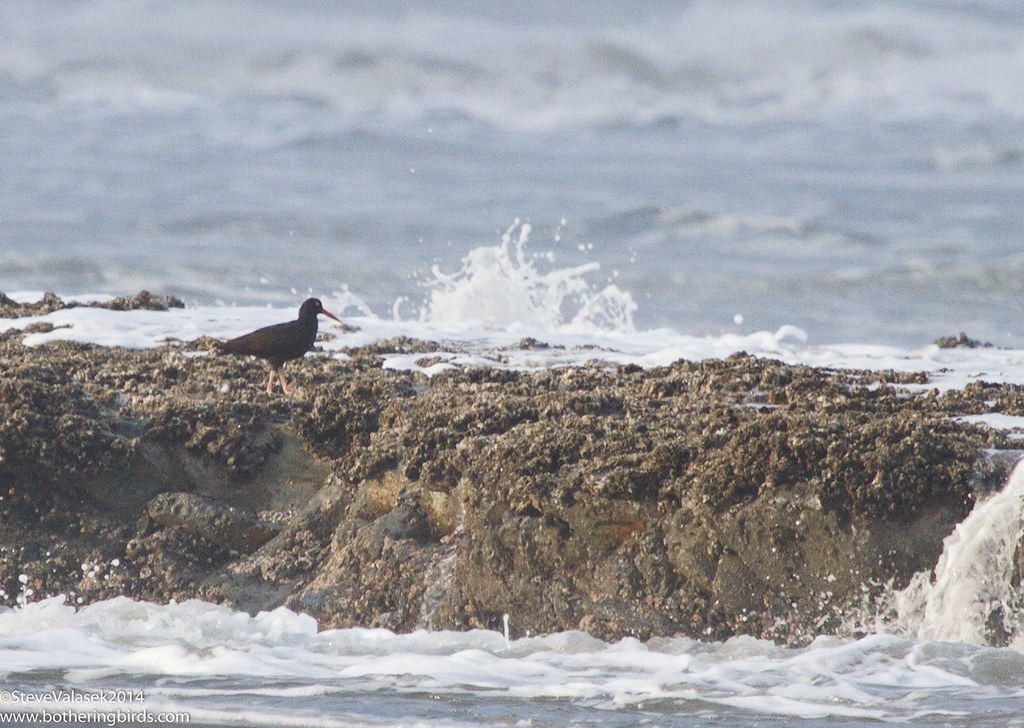I was also trying out a new camera. Since all of my gear was stolen 2 weeks ago (here come the tears again) I was really suffering from photography withdrawals. Heavy thinking led me to consider replacing my Canon 7D and lenses with a superzoom point and shoot, aka bridge camera. I narrowed down my choices to the Canon SX50 HS and a Panasonic Lumix FZ70. Both had zooms out to 1200mm (35mm equivalent). The Canon started at 24mm and the Panasonic started at 20mm. The local Target had them both side-by-side so I was able to play around with them for a bit. I ended up taking the Panasonic home because I liked how it felt in my hands, the buttons made a bit more sense to me, and it was $100 cheaper than the Canon. But after using it for a weekend, I may try the Canon out. Another plus for this camera system is the size, it would be nice to not have to lug a DSLR system around Europe, plus I'm really paranoid of being robbed again. But I digress, let's get back to the birds.
Our target birds were Sagebrush Sparrows, White-Headed Woodpecker and Resident Sandhill Cranes, all found in Wasco County. This would also be my introduction to "County Birding" aka, what birders do when their life-lists get really, really long. Apparently it's a popular thing here on the West Coast. Getting 100 or more birds in each county in each state. Some fabled birders have managed to get 300 in each county in Oregon. I'm still working on my ABA list, but it's nice to know that I'll have a head start on my Oregon County lists with 72 species seen during the day.
Wasco County is East of Portland and on the other side of Mount Hood.
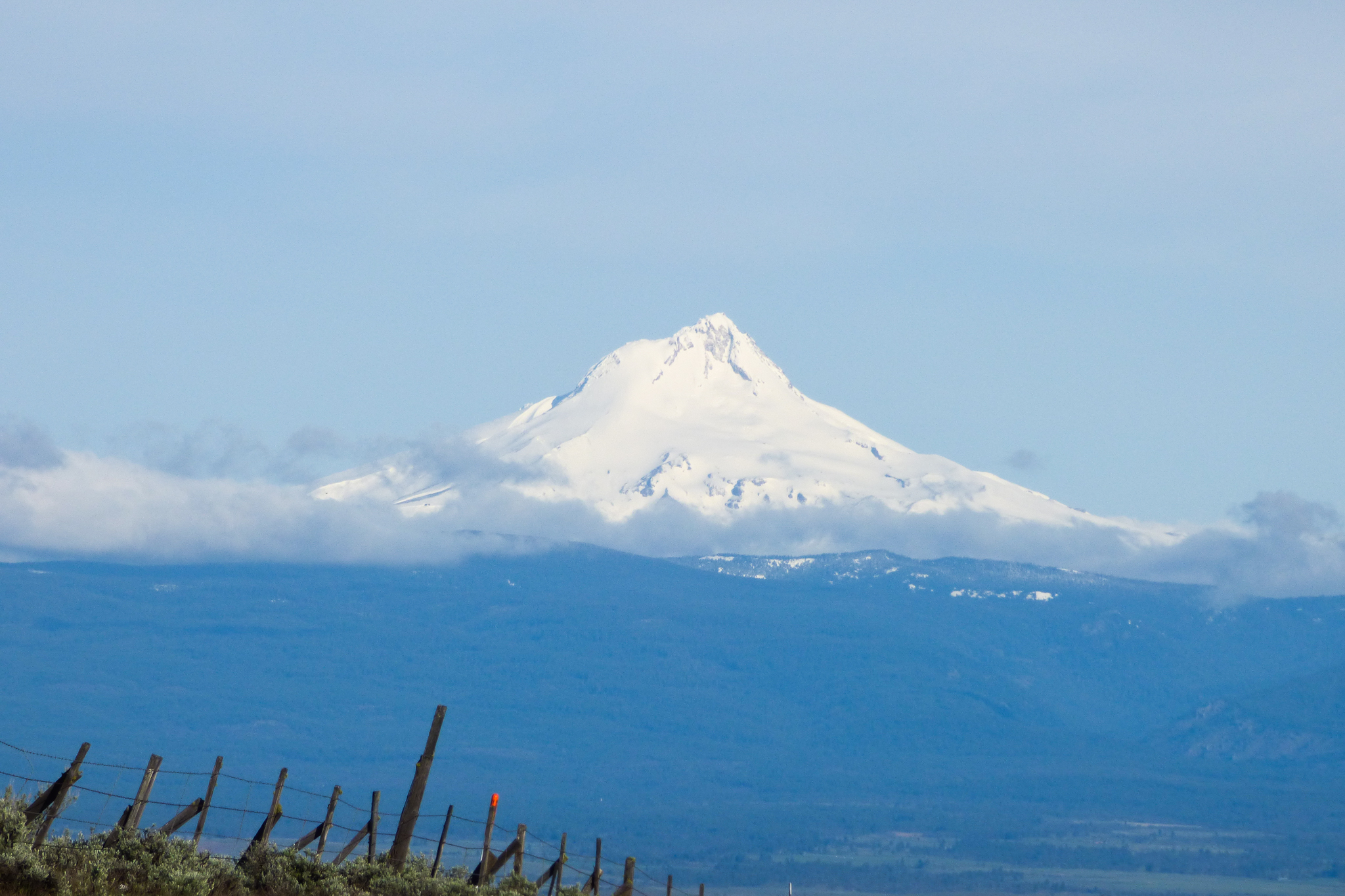 |
| Mt Hood from Wasco County OR |
 |
| Sage Thrasher - Wasco County Oregon |
But let me show you what I do like about the Panasonic Camera. The above photo is zoomed in and uncropped to 1200mm. Standing in the same spot, this is the same scene at 20mm.
 |
| Same shot as above at 20mm |
We also saw a few Mountain Bluebirds flying around.
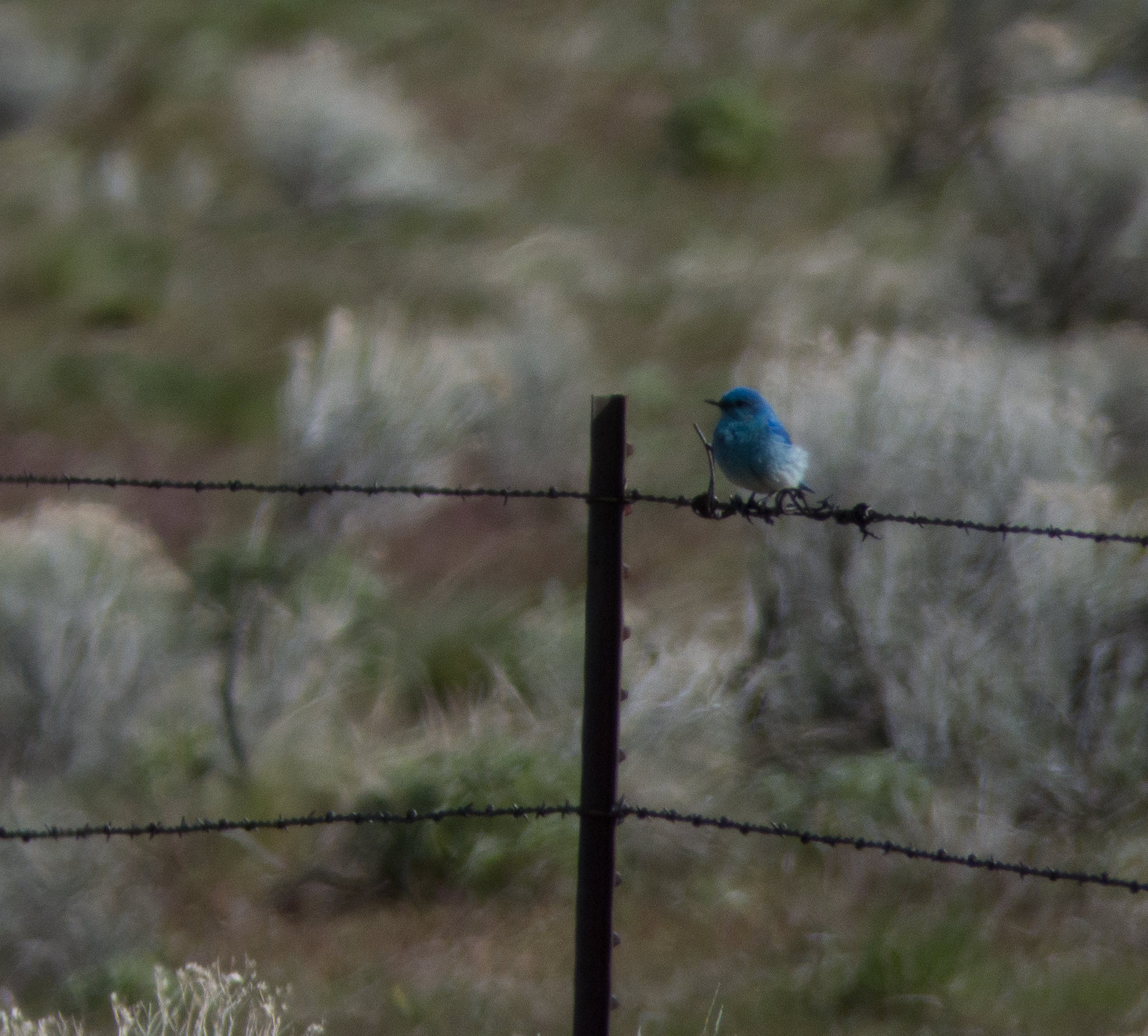 |
| Mountain Bluebird - Wasco County Oregon |
Our next target was up in the mountains, White-Headed Woodpeckers. But there was a chance to maybe see some Long-Billed Curlews along the way, which would be lifers for me. But alas, they weren't around. But we did get to see a picturesque farm.
 |
| Curlew Spot - Wasco County Oregon |
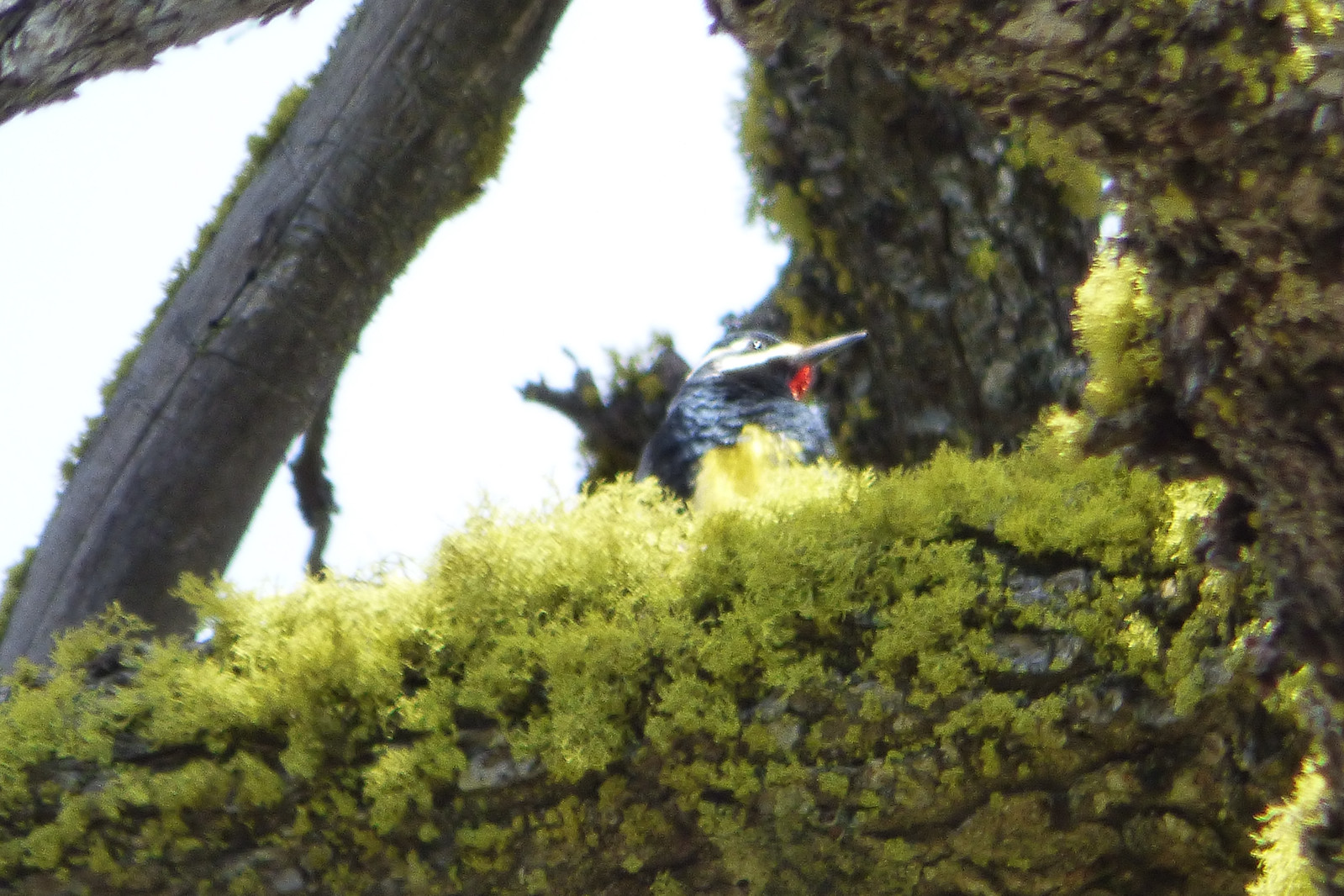 |
| Williamson's Sapsucker - Wasco County Oregon |
Once again I'll show you the zoom range of the FZ70. The above photo is at 1200mm equivalent, and this one is zoomed all the way out at 20mm. The orange box is roughly the area where the Sapsucker is.
 |
| Sapsucker zoomed out to 20mm |
There were lots of birds in this remote area. We watched a Red-Breasted Nuthatch working on it's nest.
 |
| Red-Breasted Nuthatch - Wasco County Oregon |
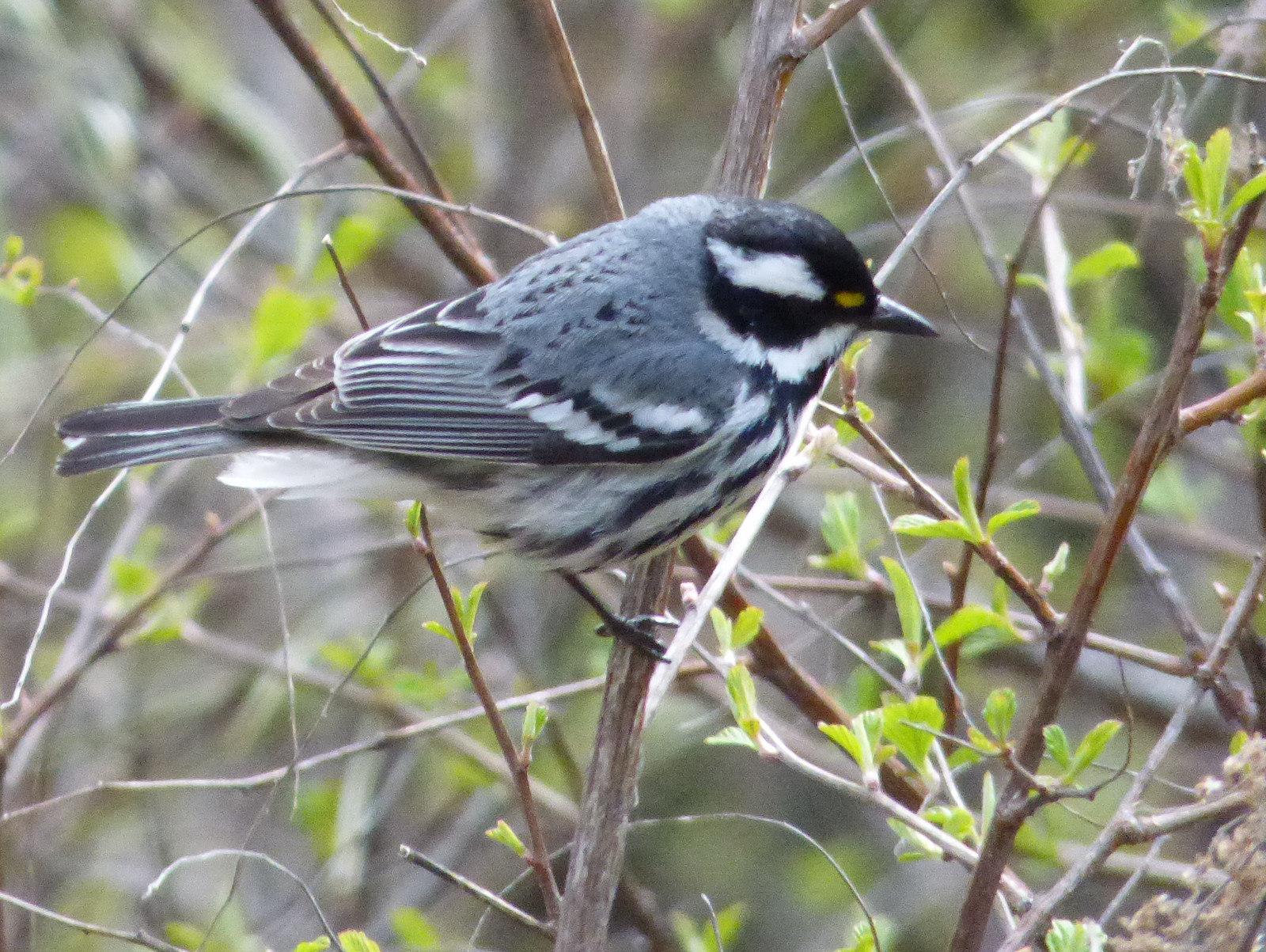 |
| Black-Throated Gray Warbler - Wasco County Oregon |
 |
| Chestnut-Backed Chickadee - Wasco County Oregon |
While we were getting ready to leave without seeing any White-Headed Woodpeckers we had a bit of a lunch. And low and behold, a small flock of moochers heard or smelled the food and decided to come see what we had to eat.
 |
| Gray Jay - Wasco County Oregon |
As we were driving along one of the forest roads we saw a single shorebird near a pond. We stopped the car and stealthily made our way back to take a look. It was quickly ID'd as a Solitary Sandpiper, lifer for me and county birds for Stefan and Justin.
 |
| Solitary Sandpiper - Wasco County Oregon |
 |
| Solitary Sandpiper - Wasco County Oregon |
 |
| Garter Snake - Wasco County Oregon |
 |
| Frog - Wasco County Oregon |
 |
| Acorn Woodpecker - Wasco County Oregon |
Stefan said that he heard some Mountain Quail calling from across the canyon, a bird which I would really like to see before I leave. As I was scanning the far side of the canyon I noticed a dark bird soaring along the canyon's far wall. I initially thought Turkey Vulture, but then the bird turned and I glimpsed a white tail. That's when I said "Bald Eagle!" and everyone turned to look. It had a dark head and we thought that it was an Immature Bald. But then Stefan got his scope on it and upon further inspection we decided that it was a Golden Eagle! The white on the tail was more of a band which had a dark edge border which I couldn't make out through binoculars. What a treat, I love those eagles much more than their more famous cousins.
Everywhere around us were flowers in bloom. I was looking at some Balsam Root along the road when I noticed a well camouflaged spider lurking in wait.
 |
| Crab Spider on flower - Wasco County Oregon |
We made our way East toward Pine Grove and found the farm. Sure enough there were 2 Tricolored Blackbirds on the ground near some horses, but they flew off before I could get any photos. Stefan mentioned earlier that the epaulets on the Tricoloreds would be very clean white with no hints of yellow. And when I saw them, I saw that he spoke the truth, so clean.
Stefan wanted me to see the very small wetlands nearby where they nested. The stand of cattails were very small and a bit off of the road in farmland. There were Red-Winged Blackbirds and Brewer's Blackbirds around too. We observed some birds through the scope and Stefan taught me a useful field-mark. Red-Winged Blackbirds tended to sit really high on reeds and cattails while Tricolored Blackbirds tended to sit lower down in the reeds.
Stefan wanted me to see the very small wetlands nearby where they nested. The stand of cattails were very small and a bit off of the road in farmland. There were Red-Winged Blackbirds and Brewer's Blackbirds around too. We observed some birds through the scope and Stefan taught me a useful field-mark. Red-Winged Blackbirds tended to sit really high on reeds and cattails while Tricolored Blackbirds tended to sit lower down in the reeds.
We also saw some birds up ahead sitting on fences and criss crossing the road. Here's one of the Tricoloreds sitting on a fence.
 |
| Tricolored Blackbird - Wasco County Oregon |
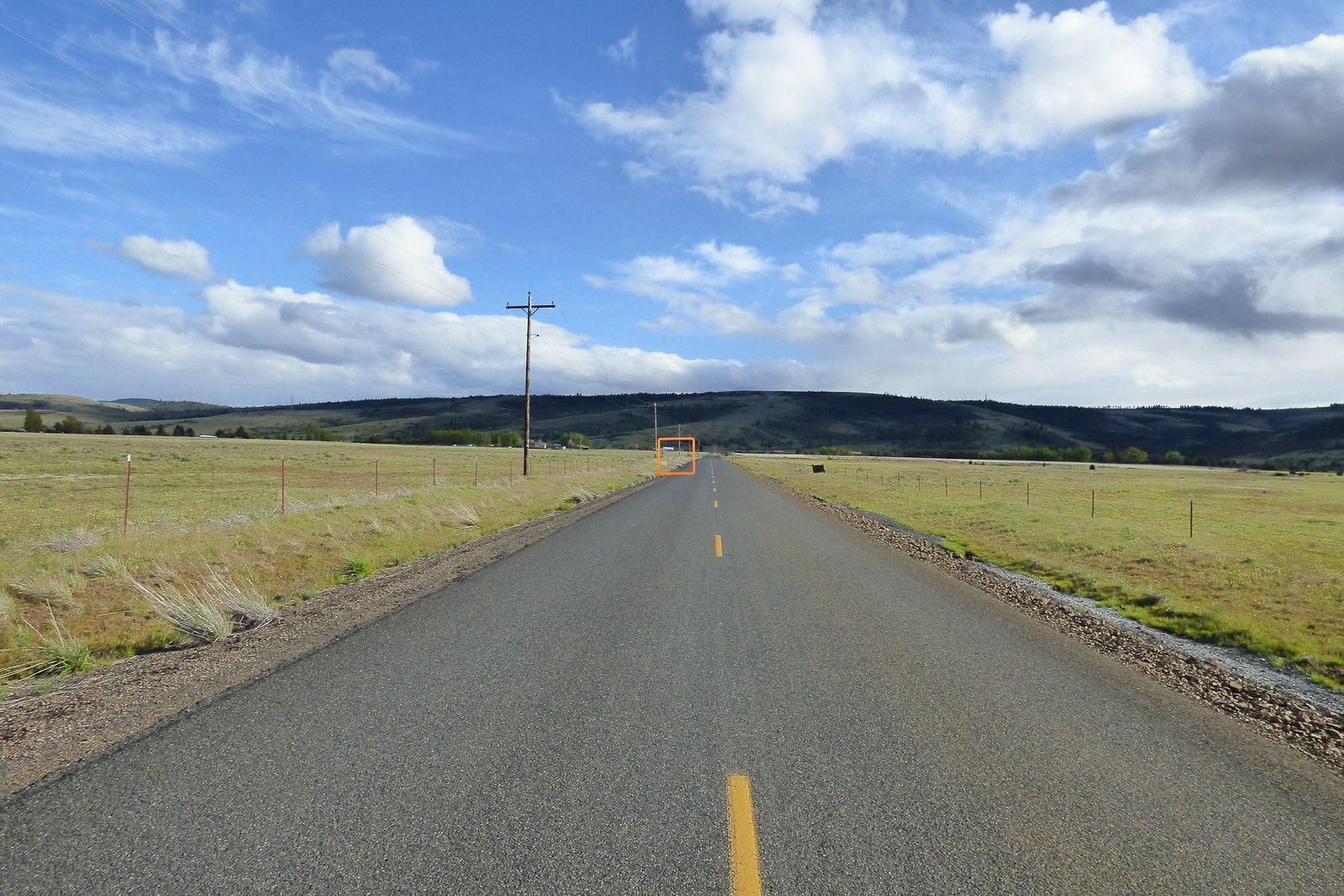 |
| FZ70 at 20mm, orange square is the photo below |
 |
| Zoomed in shot from above, FZ70 at 1200mm |
After we were done seeing the Blackbirds, we stopped by a nearby yard that had plenty of feeders out. We watched Chickadees, Warblers, Sparrows, including a late Golden-Crowned, some Brown-Headed Cowbirds and a few hummingbirds fighting over a feeder. This male Rufous Hummingbird really stole the show though.
 |
| Rufous Hummingbird - Wasco County Oregon |
As late as it was, we weren't done yet. Stefan wanted to try and get Sandhill Cranes that breed in the county. They were said to be at the Camas Prairie in Mt Hood National Forest in the Western part of the county. We stopped by about 90 minutes before dark. I was worried about rain, so I left the camera in the car. We started out walking along a trail but were only able to get brief glimpses of the open spaces. We hard some geese and again saw some Yellow-Rumped Warblers, dozens and dozens of American Robins and the usual Chickadees. We were also hoping to see Black-Backed Woodpeckers, but dipped on those too. The closest we came was seeing a sole Northern Flicker and hearing a Pileated Woodpecker off in the distance. But there were signs of Black-Backed Woodpeckers everywhere, large areas of bark scraped off of trees. Plus lots of fallen trees which they and American Three-Toed Woodpeckers like to be near. We also spotted lots of large nesting holes and some looked new.
We made our way through very marshy areas and then through thick areas of fallen logs trying to get a better view of the prairie to no avail. We followed an Elk trail for a few hundred yards too, but we never did find a better viewpoint. But, just before we turned around to head back to the car, we heard Sandhill Cranes. Anyone who have heard their calls will immediately identify them, and it was nice to hear them again. I really regret now staying in Oregon long enough to try and see some new chicks. But my time here is running out.
We're here for just 2 more weekends, which will be busy. If I'm lucky I'm going to make it out to the coast to see some Puffins, but I fear that my window to find Mountain Quail and Goshawks is over. Soon I'll be out looking at Chaffinches, Corn Crakes and European Starlings, I mean Starlings.
As far as cameras go, I really don't know what to do. Part of me wants to try the Canon out alongside the Lumix. Of course I want another DSLR and another white lens or 2. But I'm still thinking that waiting is best.
Thanks for making it far,
Cheers.




